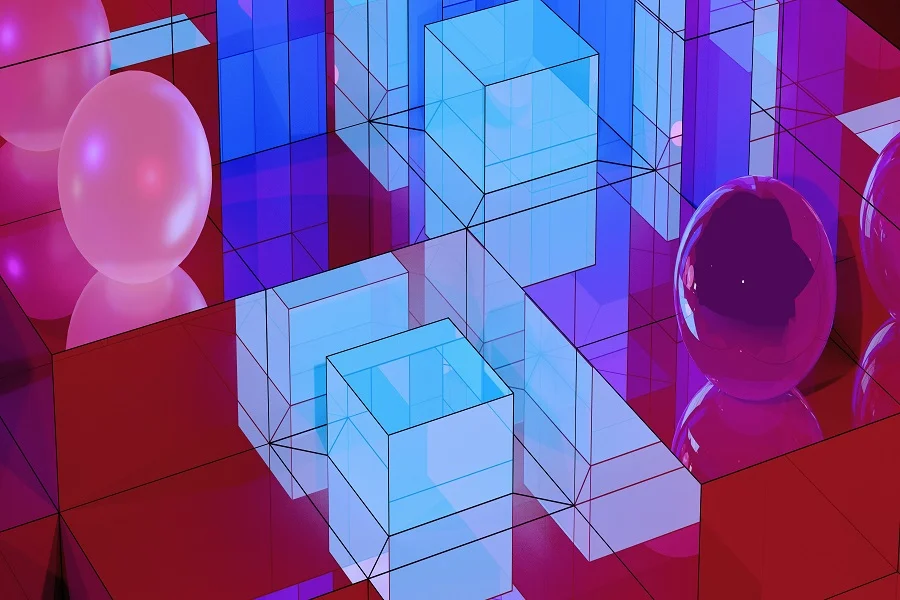The integration of immersive technologies like Augmented Reality (AR) and Virtual Reality (VR) is sending shockwaves through Calgary’s graphic design scene.
These digital disruptors are ushering in a new era of creative possibilities for local agencies and redefining client engagement.
While AR and VR each enable groundbreaking interactive experiences, they function distinctly. Understanding their capabilities empowers graphic designers to harness these technologies most effectively.
This article examines the impact AR and VR adoption is having on Calgary’s graphic design industry.
What Is The Difference Between Virtual Reality & Augmented Reality
Though often grouped together, Virtual Reality and Augmented Reality utilize different methods to transport users.
VR constructs an entirely simulated 3D environment that users become completely immersed within, effectively replacing reality. AR overlays digitally created elements onto the existing world, blending the physical and virtual.
Both qualify as “immersive technologies,” creating impactful interactive illusions through digital manipulation.
These distinct mechanisms for manipulating perceived reality unlock different graphic design opportunities businesses can leverage strategically.

How AR & VR Impact The Calgary’s Graphic Design Businesses
The integration of AR and VR has the potential to profoundly augment graphic design capabilities and steer the trajectory of a Calgary graphic design agency.
These techs are driving innovation, redefining client services, and catapulting local businesses ahead as pioneers.
Firms that strategically implement AR and VR solutions can simulate engaging concept previews for clients, expedite asset creation, enable immersive client collaboration, and futureproof offerings.
Increased Visual Immersion For Design Clients
By integrating immersive technologies like AR and VR, graphic design agencies in Calgary can increase visual immersion for clients during the design process.
This allows customers to essentially “step inside” concept visions and interact with 3D renderings pre-production. Here are some of the major benefits of VR/AR services in the designing process.
- Multi-angle 3D concept and asset exploration.
- Project walkthroughs from any virtual vantage point.
- Annotation capabilities for live markups and notes.
- Enhanced data visualization resonant with clients.
- Guiding complex design decisions collaboratively.
Virtual Prototyping and 3D Design Visualization
Creating 3D visualizations and digital prototypes was once extremely complex and time intensive.
The real-time rendering capabilities unlocked by integrating VR and AR tech allow Calgary graphic design teams to model concepts and assets with unprecedented speed and precision.
Streamlined Remote Work Processes
With remote collaboration becoming global, AR and VR enable Calgary graphic design businesses to streamline workflows between dispersed team members and clients.
Virtual workspaces allow for immutable design artifact sharing, real-time markup, and removing the friction of physical distance for review cycles.
The result is ideas communicated with clarity, feedback captured quickly, and design approval accelerated.

Virtual Showrooms and Product Displays
Highly experiential projects like retail spaces, trade show booths, and branded environments are prime candidates for next-generation VR and AR previews.
Graphic design teams can construct complex virtual showrooms long before physical deployment, allowing clients to visualize final layouts at scale.
Tweaks can be made in real-time during virtual walkthroughs, saving graphic design agencies from costly physical rework.
Cost-Benefit Analysis For Small Businesses
Not only in Calgary, but small businesses may question whether undertaking AR and VR adoption is financially viable. The good news is entry-level hardware, cloud-based solutions, and pay-as-you-go business models are driving down costs.
For small businesses focused on client experience differentiation, basic VR showcasing capabilities or AR retail demos can deliver substantial value.
- Cloud VR platforms remove the need for high-end gear.
- Scalable subscription models align cost to usage.
- Out-of-box solutions speed setup with minimal coding.
Popular Online Services & Websites Using AR and VR Technologies
A multitude of digital platforms and services are integrating AR and VR technologies to deliver more captivating and interactive experiences.
Graphic design companies in Calgary can explore implementations across ecommerce, digital marketing, data visualization, and entertainment to gain insights into the diverse use cases and opportunities with AR and VR.
Understanding both established and emerging implementations informs strategic adoption for Calgary businesses wanting to leverage these technologies early on.
Snapchat AR Filters & Lens Studio
Snapchat pioneered smartphone-enabled AR filters and lenses, allowing over 250 million users to overlay digital elements onto selfie images or surroundings.
Their Lens Studio empowers anyone to create augmented reality experiences for Snapchatters. This has enabled clever activations like a promotional AR lens for Stranger Things that attracted over 17 million users in one day.
Google ARCore and Arts & Culture VR

As a tech leader, Google is enabling augmented and virtual reality through platforms like ARCore, bringing AR to hundreds of millions of Android devices.
Meanwhile, Arts & Culture VR provides immersive journeys to over 2000 cultural sites globally. The accessibility of Google’s AR and VR makes them ideal for integration inspiration.
- Cross-platform AR development toolkit.
- Multiuser functionality and shared AR experiences.
- Ultra-high-resolution imaging and 3D scanning.
- Spatial audio and gesture recognition innovation.
- Voice search and Google Assistant integration.
Microsoft HoloLens
Microsoft’s augmented reality headset HoloLens leads the field by enabling users to interact with holograms blended into the real world.
HoloLens has appealed to industries like engineering, design, healthcare, and the military with practical mixed-reality applications.
Instagram AR Filters
Leveraging the smartphone cameras already in users’ hands, Instagram’s suite of augmented reality filters and effects is driving mainstream adoption of AR.
The Spark AR platform empowers creators to develop custom Instagram filters using intuitive templates, even without coding skills.
IKEA Place (AR Furniture Placement)
IKEA Place allows people to preview true-to-scale 3D furniture models from IKEA’s catalog in their living space using AR before buying.
This reduces guesswork around measurements, aesthetics, and fit. The Apple Design Award-winning app is an ideal embodiment of utility-driven augmented reality.
- Intuitive UX design and gesture manipulation.
- Scaled 3D assets rendered in real-time.
- View furniture against actual surroundings.
- Save room configurations to iterate options.
- Direct in-app purchasing conversion workflow.
Oculus VR (owned by Facebook)

Once synonymous with virtual reality, Oculus was snatched up by Facebook to serve as the springboard for their VR ambitions, aiming to bring VR mainstream.
With multiple headset options, their technology now enables immersive social environments and gameplay experiences.
- Wireless all-in-one VR with onboard computing.
- Hand controller input for natural interaction.
- Hardware partnerships are expanding accessible VR.
- Horizons VR social metaverse community.
- Cross-platform VR development kits.
Final Words
It’s an undeniably exciting time for graphic design in Calgary. The integration of emerging technologies like AR and VR promises to fundamentally transform design processes, enhance client services, ignite fresh creativity, and catapult local agencies ahead competitively.
Calgary graphic design firms that want to futureproof their offerings should definitely consider integrating these techs into their offerings and services.
The opportunities for local businesses are expansive; it’s merely a matter of leveraging technology to drive the next wave of Calgary graphic design excellence.
